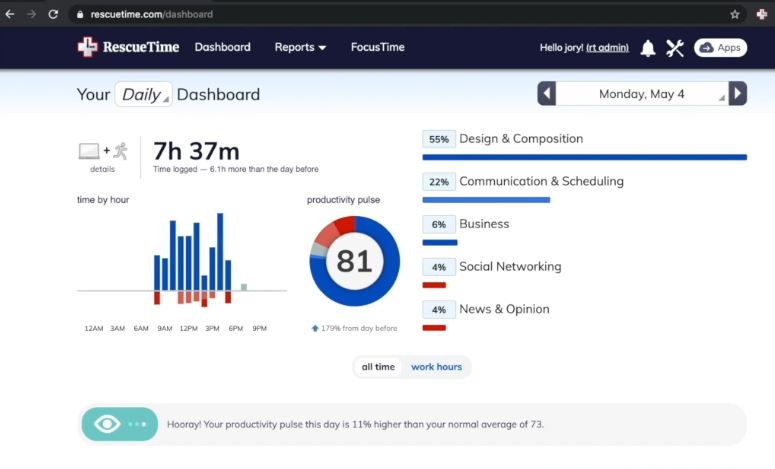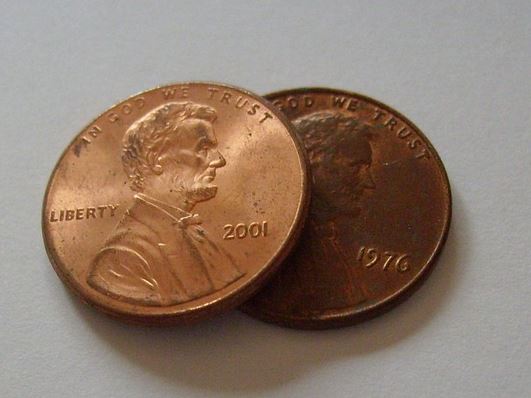Productivity
How to Time Track: A Tool to Regain Your Lost Time
It’s weird, isn’t it?
How can you spend the entire day working and still have nothing to show for it?
You got to work at 9 AM and slaved away the entire day—except for the 30 minutes you took off for lunch. Yet, here you are 8 hours later, staring at a to-do list with 16 items and only 3 checks on it.
How did that even happen?
What have you been doing the entire day?
I’d like to tell you that it’s ok, some days are like that. But, this scenario has become the daily norm.
No matter what you do, you somehow end the day with an untouched to-do list and a lot of work left undone.
Here’s the reality:
Even though it feels like you spent all day working toward your goals, you didn’t.
Your day went something like this:
- 10:00 am – 11:15 am: Took a five minute break to look something up and got carried away.
- 11:30 am – 3:10 pm: Started one project, moved on to another, and then came back to the first one. Leaving both projects unfinished.
- 3:15 pm – 4:30 pm: Didn’t feel like doing the next task on your schedule, so procrastinated and attempted to organize the papers on your desk.
It sure felt like you achieved all day, but you didn’t do what needed done. Instead, you got caught in the trap of fake productivity. You spent your time on useless tasks, not steps toward your goals.
You want to spend your time wisely, but you don’t know how.
The solution is simple:
Gain insight into what your time is spent on and redirect it to what really matters. Time tracking is the tool you need to do that.
Time Tracking Is More Than Just Numbers
When you think of time tracking, what’s the first thing that comes to mind?
A log of what tasks you did and how long you spent on them?
At a glance, that’s what time tracking looks like, but it’s actually much deeper than that.
Time tracking is more than a boring record of your endeavors. It’s a productivity tool that helps you build the foundation from which to launch your life toward true achievement.
It’s such a powerful tool that it’s one of the first actions I recommend in the 15 Day Productivity Challenge.
Time Tracking is the irreplaceable first step to beating procrastination, boosting your performance, and getting on top of life.
Why is it so important?
By tracking your time, you give yourself insight into how you’re spending your life. You’ll get the answers to questions like:
- What do I spend most time on?
- Why are my days so busy?
- How can I get the most of each moment?
Two Methods to Time Track
Time tracking is simple. You can either track everything you do in a notebook or spreadsheet or get an app to do the tracking for you.
I recommend using an app. There are thousands of free apps to choose from. My all-time favorite time tracking app is listed at the end of this post.
First, let me tell you a little about the paper/spreadsheet method for completeness’ sake.
Tracking Your Time Manually
You can track your time manually although I wouldn’t advise you to.
Each time you start a task, you record the time in your spreadsheet. Once you’re done and ready to move on to the next task, you record your end time for the first task and start time for the next.
Alternatively, you can log your tasks at the end of each day, relying on memory for the approximate start and end times.
This method is very tedious and gets boring. A few days in, you’ll decide it’s not worth the effort and quit.
It’s much easier to use an app or software to automate (most of) the process.
Using Time Tracking Apps
So many time-tracking apps are available, it can be hard to find the one that’s right for you. Additionally, most time trackers are designed for business who use time tracking to bill clients, making them overly complicated.
The best time tracker I’ve found that is designed for boosting individual’s productivity is RescueTime (free).
RescueTime
RescueTime has been my favorite time tracker for years. I love how it’s so easy to use, yet still gives a lot of insight into how you spend your time.
This time tracker will track what you do on your devices in the background, so you don’t have to worry about forgetting to start the timer. At the same time, it does allow you to start tracking manually for non-digital tasks.
RescueTime’s reports are simple to read and full of charts to help you see your time allocation in detail.
To make it even better, they also have FocusTime, a feature which blocks distracting websites and sends you a pop-up if you’ve been on a website for too long.
Get The Most Out Of Your Time Tracker
Knowing how you spend your time is essential if you’re looking for more of it. Yet, it can get cumbersome if your approach isn’t practical.
To avoid slacking off, use these tips and make your time tracking habit as easy as possible.
Keep It Simple
Time trackers usually give you a ton options. It’s great to be able to categorize your tasks, add notes, and integrate with other apps. But, sometimes more is less.
The more time you spend on the time tracker, the less time you spend on what you should be tracking.
To maximize your time, use only the necessary features. Keep your categories simple and only add notes when needed.
You Don’t Need to Track Every Little Task
Time trackers exist to tell you what you do and when, but that doesn’t mean you need to track every little detail.
When first starting to time track, you might feel the need to add every little thing you do. However, that will get boring, and you’ll most likely decide time tracking isn’t worth the hassle.
While you should track the majority of what you do, you’ll be fine if you don’t track your bathroom breaks or the five minutes you spent looking for a snack.
That being said, if it takes >10 minutes, you should definitely track it.
Estimate When You Forget To Hit Start
If your time tracker isn’t automatic, you can easily forget to start or stop the timer. It’s frustrating when this happens. Yet, you can still recover the lost time by editing the start or stop time on your time tracking app.
If you don’t know the exact time, just give your best guess.
Track As You Go
The best strategy for time tracking is to track the task while you’re doing it instead of adding tasks to your time tracker in bulk at the end of the day.
That way:
- You don’t have to take 15-30 minutes out of your day to add tasks to the tracker
- You avoid forgetting tasks and how long they took
Reviewing Your Time Tracking Reports
Not only will time tracking show you where your time is going, it will also help you determine whether you spent it wisely.
More importantly, time tracking will give you an understanding of how you work and how to maximize every routine, schedule, and plan you make.
Still, time tracking is useless if you don’t take a few minutes at the end of each day to review how you did and what you can do better the next day.
Time tracking is a tool. It’s your job to use it, learn from it, and improve.



